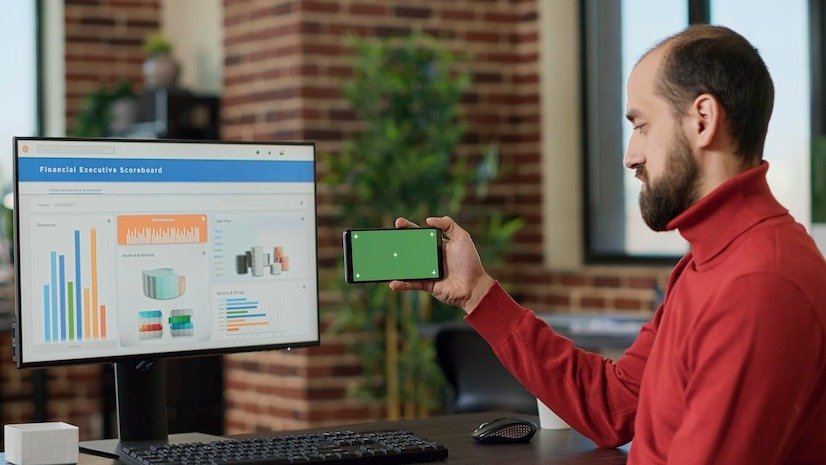Table of Contents
ToggleIntroduction
Pinterest is not just a platform for pretty pictures and DIY projects; it’s a powerhouse for driving traffic, growing a personal brand, and increasing your social media presence. With over 450 million users worldwide, Pinterest offers a unique blend of social media and search engine features. So, if you’re looking to grow your followers, you’ve come to the right place. Hitting the milestone of 50k Pinterest followers can seem daunting, but with a clear strategy, it’s absolutely achievable.
Understanding Pinterest Basics
Why Pinterest is Different from Other Social Platforms
Unlike platforms like Instagram or Twitter, Pinterest is more of a visual search engine than a social network. People use Pinterest to find ideas, inspiration, and solutions, making it an ideal platform for sharing evergreen content that people will return to again and again.
Setting up a Pinterest Business Account
If you’re serious about growing your Pinterest followers, the first step is to create a business account. A business account provides access to Pinterest Analytics, promoted pins, and other tools essential for growth.
Creating a Strong Pinterest Profile
Choosing the Right Username and Bio
Your username should be easy to remember and relevant to your niche. The bio is equally important. Use it to describe what you offer and incorporate some keywords that align with your audience’s interests.
Optimizing Your Profile Picture and Cover Image
Your profile picture should be a clear representation of your brand, whether it’s your logo or a professional headshot. The cover image should visually represent what your account is about and entice people to follow you.
How to Link Your Website and Social Profiles
Pinterest allows you to add links to your website and other social media profiles. Be sure to verify your website, as this builds trust with your audience and allows you to track more detailed analytics.
Defining Your Niche and Target Audience
Why Niche Matters on Pinterest
Focusing on a specific niche helps you stand out in the sea of pins and boards. It’s easier to grow your followers when you’re clear about the type of content you provide. Your audience will know exactly what to expect from your boards and pins.
Identifying Your Target Audience’s Interests
To grow your followers, you need to know what your target audience is interested in. Use Pinterest’s audience insights to discover popular categories and search terms that your ideal followers are engaging with.
Using Audience Insights for Growth
Pinterest offers detailed audience insights that can help you better understand your followers’ preferences. Analyze these to fine-tune your content strategy and cater to their needs.
Pinterest SEO and Keywords
The Importance of Keywords on Pinterest
Pinterest operates much like a search engine, so keywords play a crucial role in getting your pins seen. Proper keyword placement in your pin descriptions, board titles, and bio can make a massive difference in visibility.
How to Find High-Performing Keywords
Use Pinterest’s search bar to find trending keywords related to your niche. Google’s Keyword Planner and tools like Ubersuggest can also provide valuable keyword data for optimizing your pins.
Optimizing Pin Descriptions for Search
Always include relevant keywords in your pin descriptions. Aim for natural keyword usage while explaining the pin’s purpose or what the pinner will gain by clicking on it.
Pin Design and Aesthetics
Creating Click-Worthy Pins
Your pins should stand out. High-quality images paired with bold, readable text tend to perform the best. Make sure your designs are mobile-friendly, as most Pinterest users browse on their phones.
How Colors and Fonts Affect Engagement
Bright, contrasting colors and easy-to-read fonts capture attention. Avoid cluttered designs; simple, clean aesthetics perform better on Pinterest.
Tools for Designing Eye-Catching Pins
You don’t need to be a graphic designer to create stunning pins. Tools like Canva and Adobe Spark offer templates that are Pinterest-optimized and easy to customize.
Consistent Pinning Strategy
How Often Should You Pin?
Consistency is key. Aim to pin multiple times a day, but don’t overwhelm your followers. Around 10-15 pins per day, spread throughout the day, is a good starting point.
The Best Times to Post for Maximum Engagement
The best times to post on Pinterest are typically early mornings and late evenings when most users are active. Use Pinterest Analytics to figure out the times that work best for your audience.
Automating Your Pinning Schedule with Tools
To save time, use scheduling tools like Tailwind to automate your pinning strategy. These tools allow you to set a schedule and pin at optimal times without having to do it manually.
Using Pinterest Boards Effectively
Creating Themed Boards to Organize Content
Your boards should be well-organized and themed according to your niche. This helps new followers quickly find the content they are most interested in.
How to Use Group Boards for Growth
Group boards allow multiple pinners to contribute to a single board, expanding your content’s reach. Collaborating with other pinners in your niche can expose your pins to a broader audience.
Why You Shouldn’t Ignore Secret Boards
Secret boards are a great place to store content ideas and test strategies before making them public. You can also use them to plan seasonal content ahead of time.
Engaging with Your Pinterest Community
How to Respond to Comments and Questions
Engagement is key to building a loyal following. Always respond to comments and questions on your pins to create a sense of community and encourage repeat engagement.
Networking with Other Pinterest Users
Follow accounts in your niche, engage with their content, and build relationships. Networking with other Pinterest users can lead to collaborations and increased exposure for your account.
Leveraging Influencers for Cross-Promotion
Partnering with influencers or popular pinners in your niche can be a fast track to gaining more followers. Look for influencers whose audience aligns with yours and create mutually beneficial partnerships.
Collaborating with Other Creators
The Benefits of Joining Group Boards
Group boards can give your pins more exposure and bring new followers from contributors’ audiences. This is a powerful strategy for reaching new followers quickly.
How to Find and Collaborate with Pinners in Your Niche
Start by searching for group boards that align with your niche. Reach out to the owners of these boards and request an invitation to contribute.
Creating Collaborative Pinning Campaigns
Consider running a collaborative campaign with other creators, such as a themed pinning week, where everyone involved pins around a particular topic. This not only increases your reach but also engages multiple audiences.
Analyzing Pinterest Analytics
How to Use Pinterest Analytics to Track Growth
Pinterest Analytics is an essential tool for understanding what works and what doesn’t. Track your most popular pins, audience demographics, and engagement rates to shape future content.
Identifying What’s Working and What’s Not
Look for trends in your most successful pins—are there commonalities in design, keywords, or timing? Use this information to replicate success across your account.
Adjusting Your Strategy Based on Analytics Data
If certain pins aren’t performing well, don’t be afraid to pivot. Analytics data will guide you on how to adjust your content or posting times to better suit your audience.
Promoted Pins and Paid Advertising
When to Invest in Pinterest Ads
Once you’ve established a strong organic presence, you may want to consider paid advertising to accelerate your growth. Promoted pins can give you a quick follower boost and expose your content to a broader audience.
Setting Up a Promoted Pin Campaign
To run a successful campaign, select pins that have already performed well organically. Use high-quality images and ensure that your promoted pins are optimized with the right keywords.
Tracking the ROI of Pinterest Ads
Measure the effectiveness of your Pinterest ads by tracking clicks, repins, and conversions. This data will help you determine whether your investment is paying off and guide future ad campaigns.
Avoiding Common Pinterest Mistakes
Why Inconsistent Posting Hurts Your Growth
Inconsistent pinning makes it harder for Pinterest’s algorithm to recognize your account as active and authoritative. Consistency is key to building momentum.
The Dangers of Ignoring Pinterest SEO
Neglecting Pinterest SEO means your pins won’t be easily discoverable. Make sure you’re using the right keywords and optimizing your content for search.
Not Engaging with Your Followers Enough
If you’re not responding to comments or engaging with your followers, you risk losing them. Pinterest may not be as interaction-heavy as other platforms, but engagement still matters.
Growing Organically vs. Paid Methods
The Pros and Cons of Organic Growth
Organic growth may take longer, but it builds a loyal and engaged following. It also doesn’t cost anything, making it ideal for those just starting out.
When to Consider Paid Promotions for Faster Growth
Paid promotions can help you grow faster, but they come at a cost. Once you’ve established a solid foundation, consider investing in promoted pins to boost your follower count more quickly.
Mixing Both for Optimal Results
For the best results, use a combination of organic strategies and paid promotions. This balanced approach ensures steady growth while also giving your account a quick boost when needed.
Conclusion
Reaching 50k followers on Pinterest doesn’t happen overnight, but with consistent effort, strategic pinning, and thoughtful engagement, it’s entirely within your grasp. Whether you choose to grow organically or mix in paid promotions, the key is to stay patient and persistent.
See our other trending posts: freelance-bookkeeping














